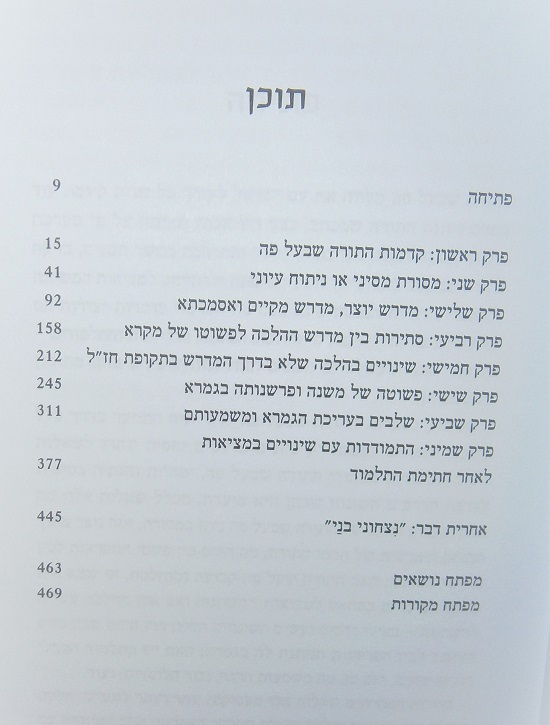Four New Books
Four New books
By Eliezer Brodt
In this post I would like to briefly describe four new (well, newish) works. For a short time, copies of these works can be purchased through me for a special price. Part of the proceeds will be going to support the efforts of the Seforim Blog. Contact me at Eliezerbrodt@gmail.com for more information.
.תשובות ר’ יצחק בן שמואל מדמפייר, (ר”י הזקן), ההדירו והוסיפו מבואות פנחס רוט ואברהם (רמי) ריינר, הוצאת מקיצי נרדמים, ירושלים תש”ף, לט עמודים+ 331 עמודים
The first volume which I am very happy to announce is the publication of an important and eagerly awaited work, The Responsa of the Rabbi Isaac ben Samuel of Dampierre (Ri HaZaken), A Critical Edition, edited with an introduction and notes by Avraham (Rami) Reiner & Pinchas Roth. This volume was printed by Mekitzei Nirdamim and is distributed by Magnes Press. The following is from the book’s abstract:
Isaac ben Samuel of Dampierre, often known as Ri ha-Zaken, was a leading figure in the Tosafist movement. The Tosafists were active in Northern France during the twelfth and thirteenth centuries. Their dialectical approach to interpretation of the Talmud and other classic rabbinic texts created a revolution in Jewish intellectual life. This volume gathers, for the first time, 140 responsa written by Isaac of Dampierre in response to questions of practical law and legal interpretation. Each responsum was edited according to the most accurate manuscripts, with a critical apparatus and extensive historical and textual notes. The introduction explores Isaac of Dampierre’s life and thought as they emerge from the responsa.
Here is the table of contents for this work:
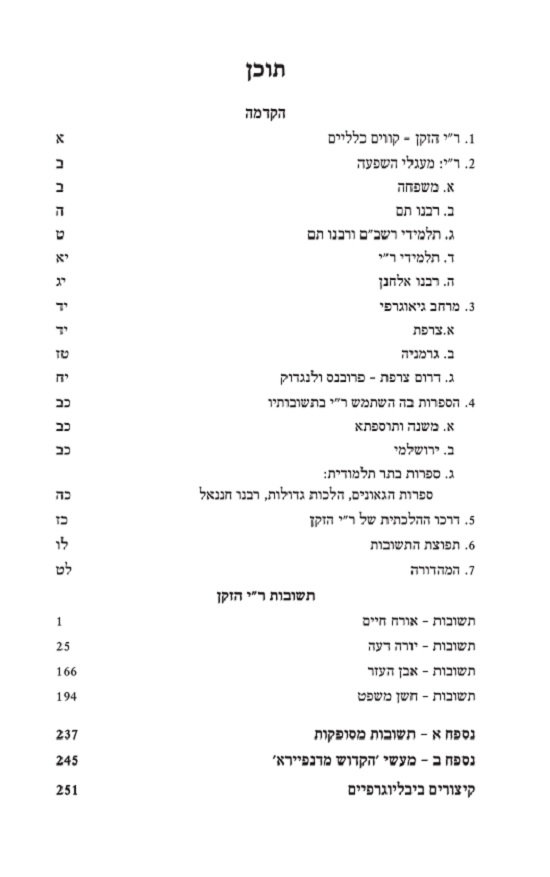
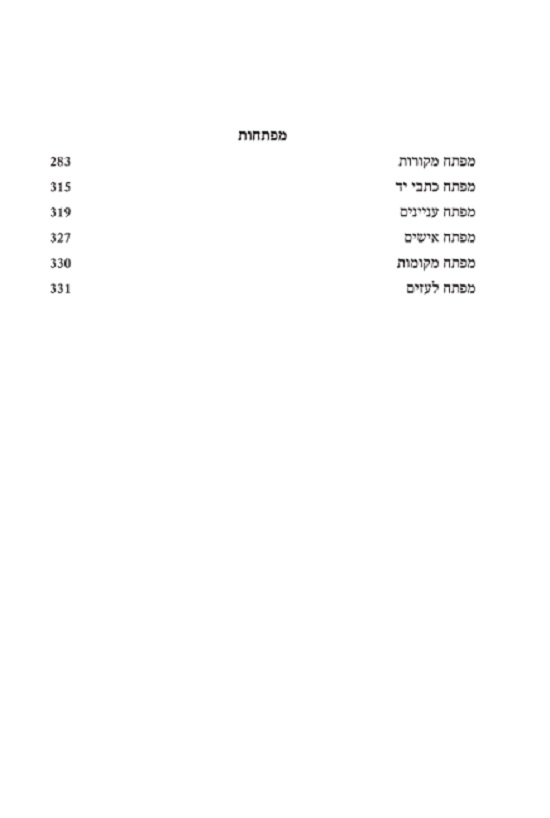
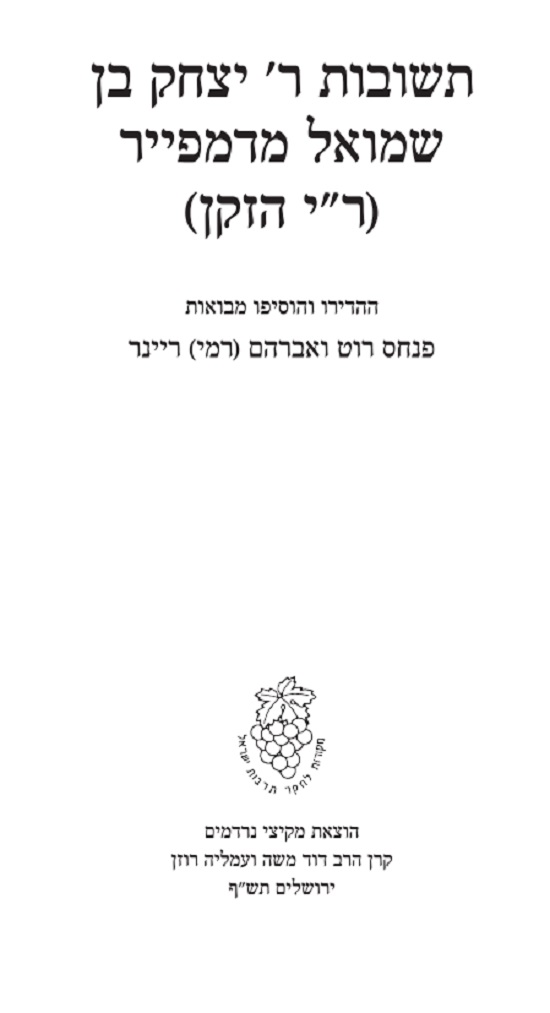
.יוסף פרץ, לשון ומסורה אסופת מאמרים, הוצאת מכללת אורות ישראל, 570 עמודים
The second book which I would like to mention is by Yoseph Peretz, Language and Masorah. Peretz is one of the leading experts in the field of the Masorah and Hebrew Language. This fascinating volume is a compilation of his articles, new and those published over many years, on a wide range of topics. If you’re interested in an in-depth introduction of the book e mail me at eliezerbrodt@gmail.com
Here is the table of contents for this work that gives one an idea of what the work is about:
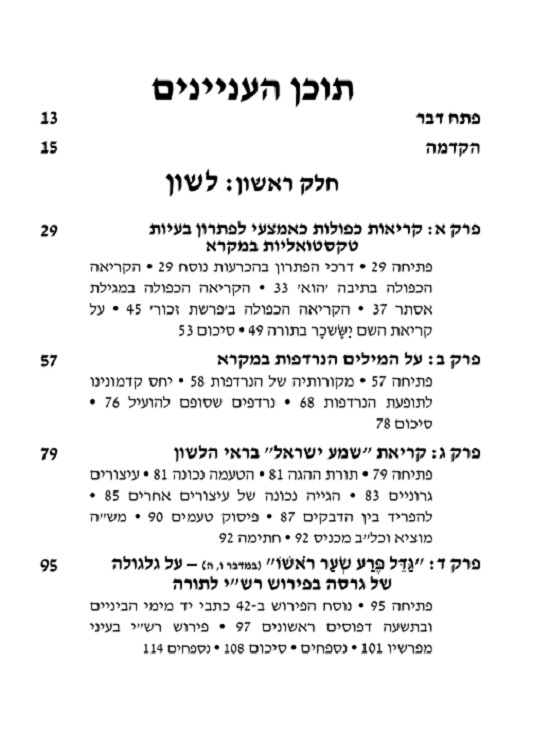
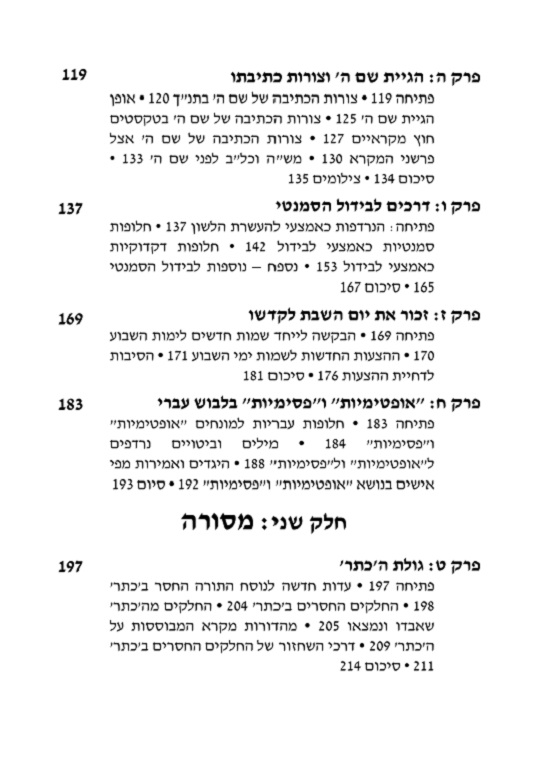
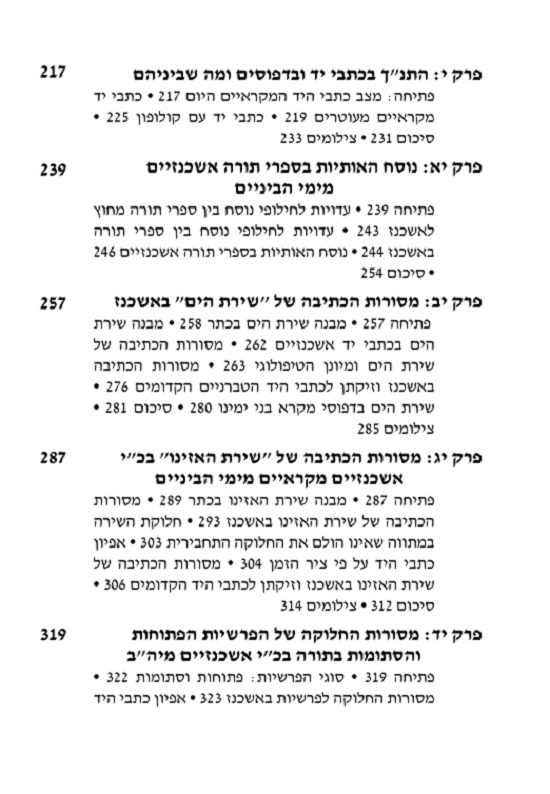
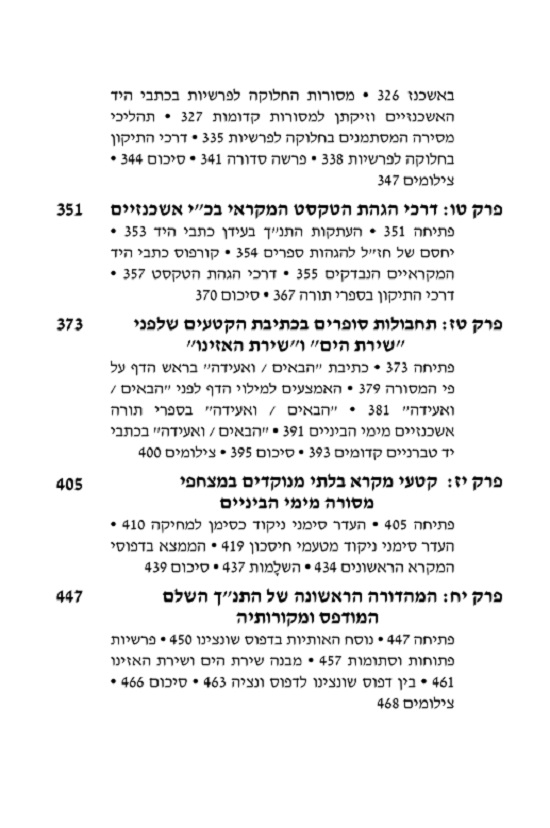
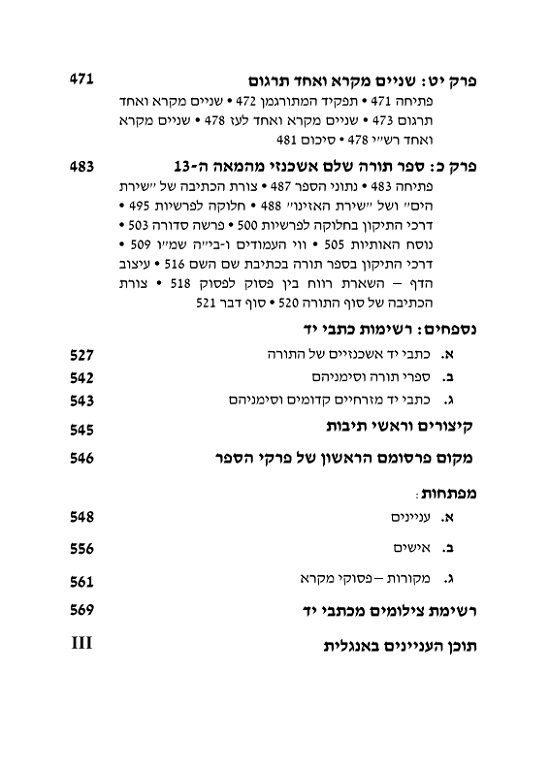
.אהרן קסל, העולם המופלא של נוסח התורה, כרמל, 356 עמודים
The third book which I would like to mention is the Wondrous story of the Text of the Torah by Aharon Cassel.
The description of this book is as follows:
This book may aptly be subtitled: “Everything You Wanted to Know about the Text of the Torah But Were Afraid to Ask.” It deals mainly with the letter-text (consonantal text) of the Torah as it appears in Torah scrolls. The discussion centers around the variations between the texts in various sources, the methods of transmission of the text, and the mechanisms (like the Masorah) that are intended to guarantee the accuracy of the transmission. The book also touches on the subject of the closed and open ‘parshiyot’ in the Torah and the structure of the two songs in the Torah, the Song of the Sea and the Song of Moses (Haazinu). It also relates to the vocalization and cantillation notes in the text but not to the graphic form of the letters.
Topics dealt with in the book are: Who determined the text of the Torah that is accepted today? What are the differences between the various texts, both those we have today and those from generations ago? How was the Torah transmitted in biblical times? What happened to the text during the Babylonian exile and what was the enterprise of Ezra and the men of the Great Assembly? Who added the vocalization and cantillation notes to the letter text, and why? When did they start becoming strict about matres lectionis (the use of certain consonants to indicate a vowel in the word i.e. the spelling of the word being defective [haser] or plene [ma’le])? What is the Masorah? Why is the Aleppo Codex unique? What is special about the Yemenite text? What is the fascinating story of the Rema’s (Rabbi Moses Isserles) Torah scroll? What was Rabbi Mordechai Breuer’s amazing enterprise?
This book deals with these questions and many more, in an attempt to encompass the entire subject and to give the reader a taste of its many aspects. The book is intended for anyone interested in Judaism, Jewish history or the history of books; for readers with Jewish religious knowledge and for those who do not have such knowledge.
Here is the table of contents for this work:
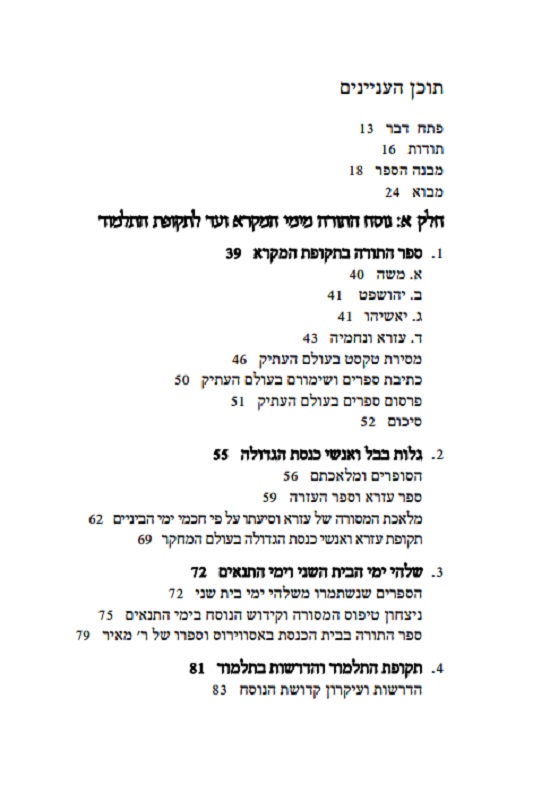
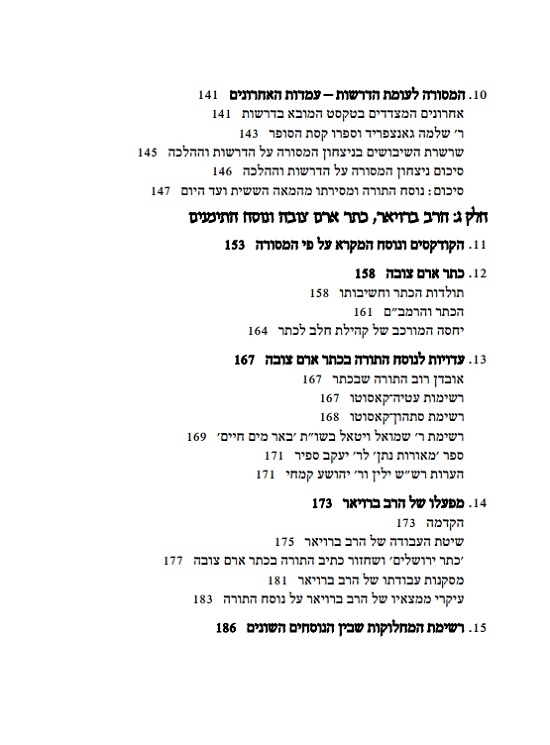
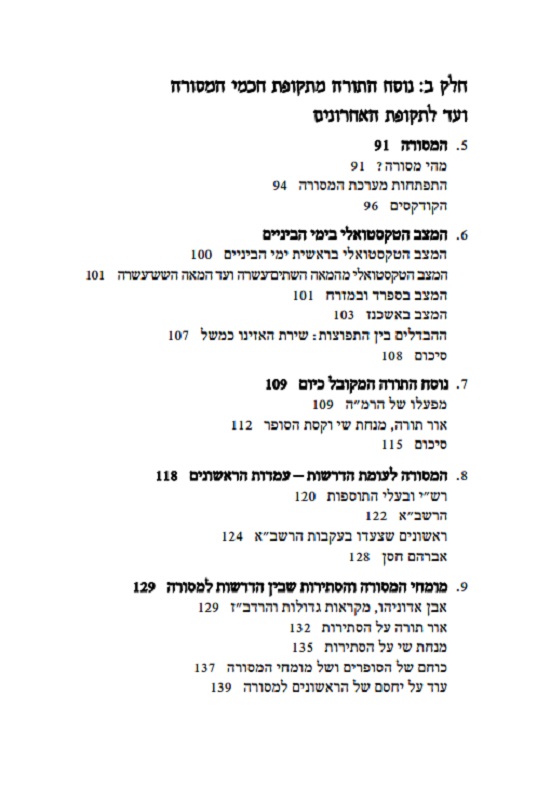

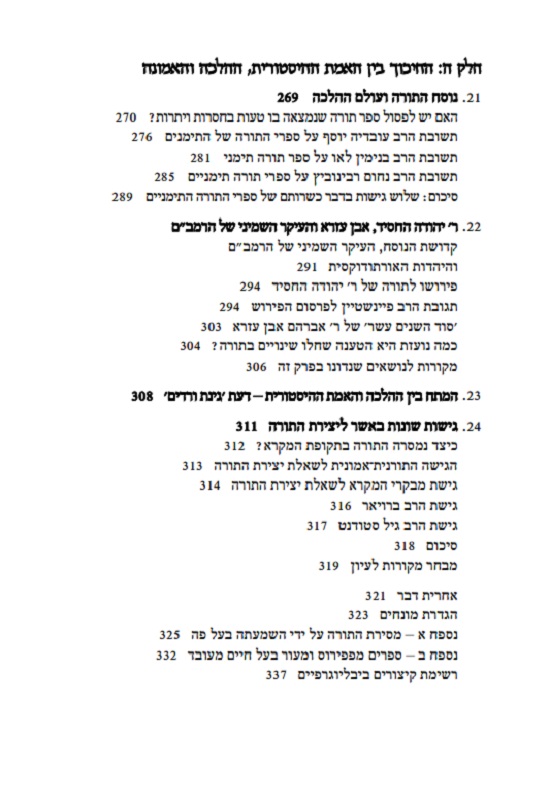
.אמנון בזק, נצחוני בני, שאלות יסוד בלימוד תורה שבעל פה, ידיעות ספרים, 486 עמודים
The fourth work I would like to mention is from Amnon Bazak, titled Fundamental Questions in the Study of Oral Law. This very useful, clearly written book deals with key questions about: Torah She-Baal Peh, which parts were given at Sinai, how Drashot work – especially when they are contradict P’shuto Shel Mikra, Pshuto Shel Mishna and the editing of the Talmud.
Here is the table of contents for this work:
